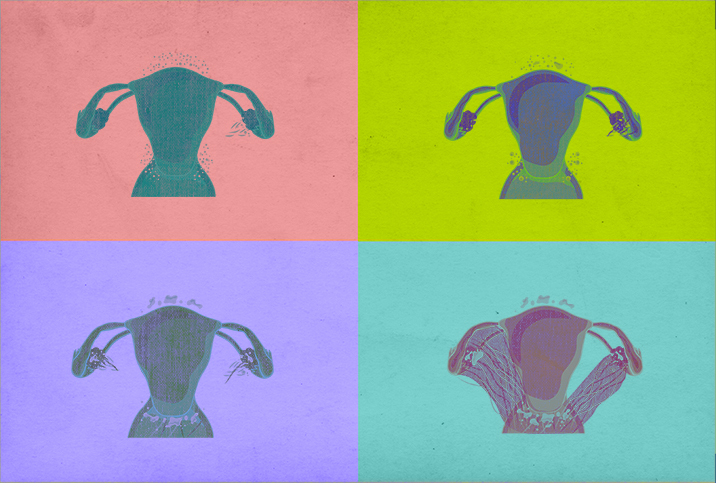Bindi Irwin Shares 10-Year Struggle With Endometriosis

After living with "insurmountable fatigue, pain and nausea" for a decade, Bindi Irwin finally found relief. In an Instagram post, the wildlife conservationist, reality TV star and mother shared that she had undergone surgery for endometriosis, a painful inflammatory condition that affects about 10 percent of menstruating people, according to the World Health Organization (WHO).
In the March 8 post, Irwin wrote: "Trying to remain a positive person and hide the pain has been a very long road," with many tests, doctor visits and scans, and little respite.
"A doctor told me it was simply something you deal with as a woman and I gave up entirely, trying to function through the pain," she wrote.
Finally, a friend, singer Leslie Mosier, helped to set her on the path to recovery.
"Going in for surgery was scary, but I knew I couldn't live like I was," Irwin wrote. "Every part of my life was getting torn apart because of the pain."
After removing a cyst and 37 lesions, some of which were "very deep and difficult to remove," Irwin's doctor asked, "How did you live with this much pain?" The feeling of validation, Irwin wrote, was "indescribable."
Irwin further explained how she wondered for a long time if she should share her journey in a public space, but ultimately decided she had a "responsibility" to share her story with others who may need help.
Irwin, the daughter of the late Australian conservationist and "Crocodile Hunter" TV host Steve Irwin, shared the post on International Women's Day during Endometriosis Awareness Month.
About endometriosis
Endometriosis is a condition where tissue similar to that of the endometrium—or uterine lining—grows outside the uterus, according to the WHO. It causes lesions to develop on and near the uterus and "chocolate cysts," or cysts filled with endometriotic tissue and blood, to form inside the ovaries. Endometriosis lesions can embed deep into organs and tissues, and stray to areas further from the uterus, including the bowels, rectum, bladder and rectovaginal septum. Very rarely, it can reach organs outside the pelvis, such as the lungs or brain.
Endometriosis can be "excruciating" for a few reasons, explained Deborah Lee, M.B.Ch.B., a sexual and reproductive health specialist at Dr Fox, an online pharmacy in the United Kingdom, and Eve Lepage, R.N., M.S.N., a science writer at Clue by Biowink and a registered fertility nurse specialist based in Berlin.
For one, the condition causes chronic inflammation and scar tissue accumulation. Additionally, endometrial-like tissues thicken and bleed during a menstrual cycle, just like the tissue inside the uterus. However, because the blood has nowhere to go, it accumulates in the pelvic cavity. Moreover, the tissue can cause blockages in the fallopian tubes and other areas, leading to more swelling and pain.
Besides chronic pelvic pain, endometriosis is associated with symptoms such as heavy, painful periods, gastrointestinal difficulties, fatigue, bleeding between periods, painful intercourse and infertility, according to Mayo Clinic. About 40 percent of women with infertility have endometriosis, according to the American College of Obstetricians and Gynecologists (ACOG).
Severe endometriosis can cause additional complications, including internal bleeding if a cyst ruptures, and a "frozen pelvis." Lee explained that organs move freely within the pelvic cavity in a healthy person. But in a person with severe endometriosis, inflammation and scar tissue bind the organs and trap them in place, sometimes in incorrect positions, which can cause intense pain, especially during sexual intercourse.
What does surgery involve?
Lee said about 12 percent of endometriosis patients eventually need surgery, which, in addition to relieving pain, may help preserve or restore fertility.
A laparoscopic, or keyhole, surgery, is the most common method, Lee said. This entails inserting a small, flexible tube into the abdominal wall to inspect the pelvis and lower abdomen, then excising or ablating the endometriotic deposits.
If the endometriosis has infiltrated deeper into the body, affecting areas such as the bowels or bladder, more complex surgery might be necessary, Lee said. In some cases, this involves a hysterectomy and oophorectomy, the removal of the uterus and ovaries, respectively.
Most people experience significant pain relief after surgery, but about 20 percent of people don't respond and need further treatment, according to Cleveland Clinic. Endometriosis can recur, Lee said, but taking medications such as gonadotropin-releasing hormone (GnRH) antagonists can decrease the risk.
Raising awareness and ending stigma
Like Irwin, many people live with endometriosis for years before receiving meaningful help, Lepage said.
"It can take on average seven to 10 years for someone with endometriosis to receive a diagnosis and appropriate treatment," Lepage said. "Often, symptoms of endometriosis can be mistaken for other conditions, and there is a lack of awareness and understanding of the condition among healthcare practitioners and the general population."
Irwin is the latest celebrity to share their endometriosis story in hopes of increasing awareness and diminishing stigma around the condition. Actor and author Padma Lakshmi, who was diagnosed in 2006 after having symptoms for 23 years, founded the Endometriosis Foundation of America, which Irwin linked to in her post.
In 2022, comedian and actor Amy Schumer released a docuseries about her struggle and subsequent hysterectomy, and Lena Dunham, Emma Roberts, Chrissy Teigen, Alexa Chung and Halsey have also spoken out.
"I'm aware of millions of women struggling with a similar story," Irwin wrote in her Instagram post. "There's stigma around this awful disease. I'm sharing my story for anyone who reads this and is quietly dealing with pain and no answers. Let this be your validation that your pain is real and you deserve help. Keep searching for answers."


















